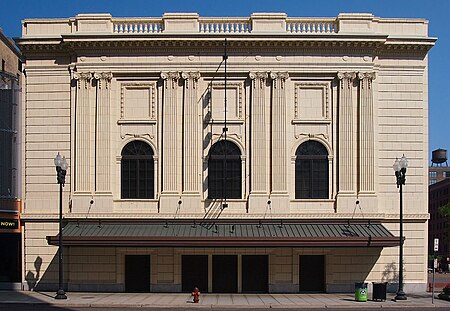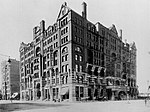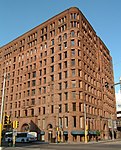Cowles Center for Dance and the Performing Arts

The Cowles Center for Dance and the Performing Arts (formerly the Minnesota Shubert Performing Arts and Education Center) is a performing arts center and flagship for dance in downtown Minneapolis, Minnesota, United States. The Cowles Center was developed as an incubation project by Artspace Projects, Inc and includes the refurbished 500-seat Goodale Theater (formerly the Sam S. Shubert Theater); the Hennepin Center for the Arts, home to 20 leading dance and performing arts organizations; a state-of-the-art education studio housing a distance learning program; and an atrium connecting the buildings. The Cowles Center is a catalyst for the creation, presentation and education of dance in the Twin Cities. Both the Goodale Theater and the Hennepin Center for the Arts (formerly the Minneapolis Masonic Temple) are on the National Register of Historic Places. The distance learning program began teaching students in 2002. Using IP videoconferencing technologies, it brings artists into classrooms throughout Minnesota, nationally and internationally, creating two-way interactive, real-time teaching environments.
Excerpt from the Wikipedia article Cowles Center for Dance and the Performing Arts (License: CC BY-SA 3.0, Authors, Images).Cowles Center for Dance and the Performing Arts
Hennepin Avenue, Minneapolis
Geographical coordinates (GPS) Address Nearby Places Show on map
Geographical coordinates (GPS)
| Latitude | Longitude |
|---|---|
| N 44.979722222222 ° | E -93.273055555556 ° |
Address
Butler Park
Hennepin Avenue
55403 Minneapolis
Minnesota, United States
Open on Google Maps










